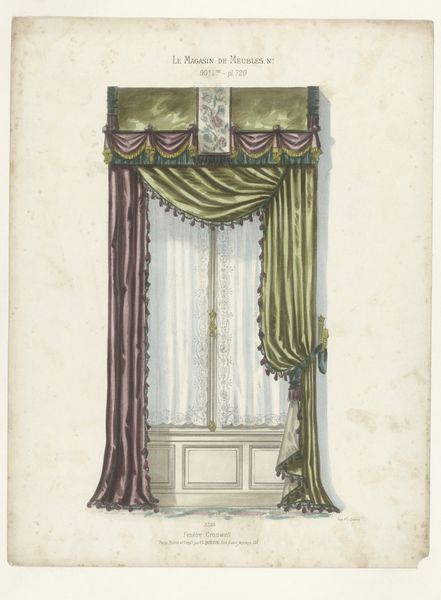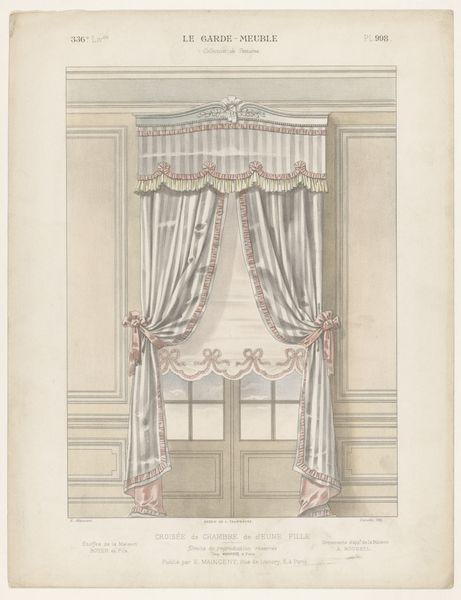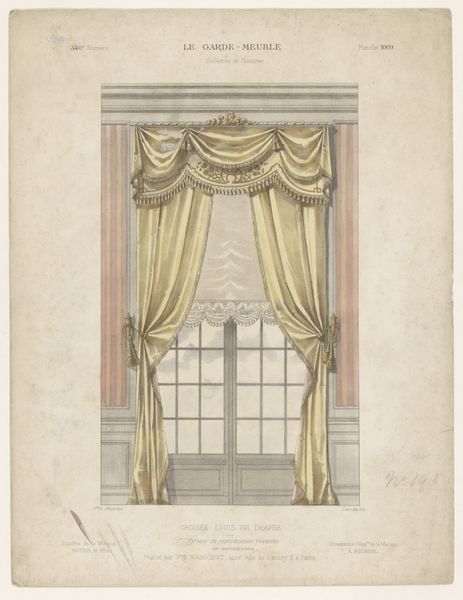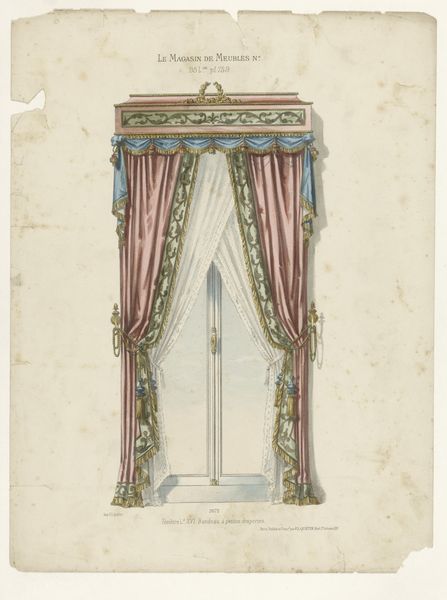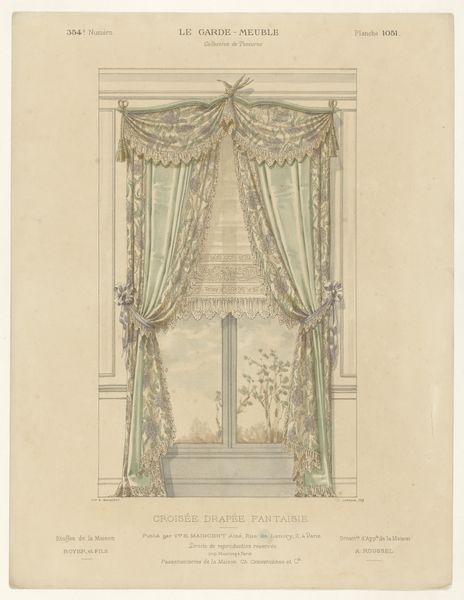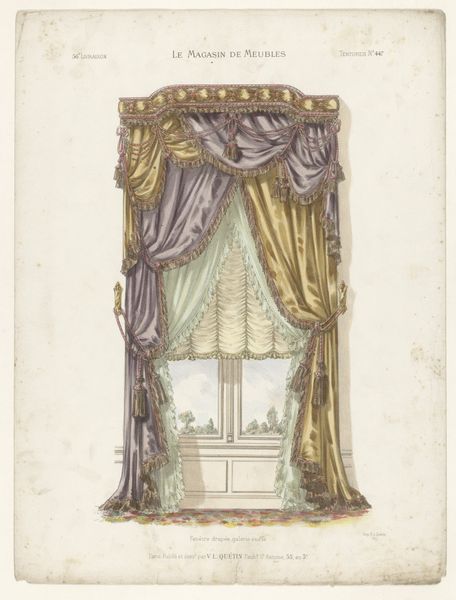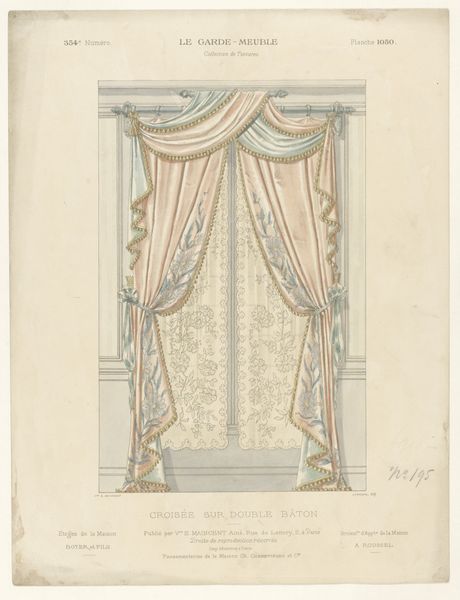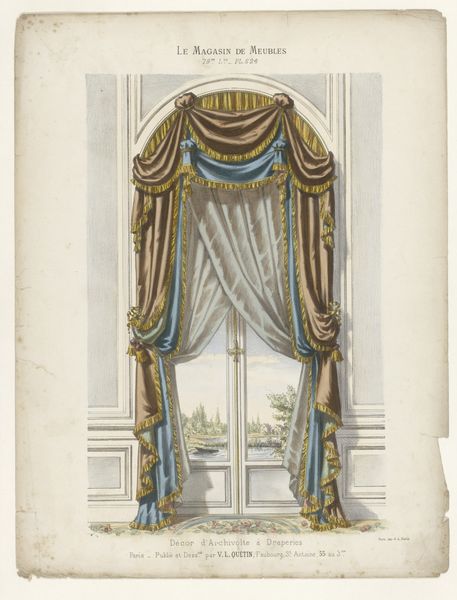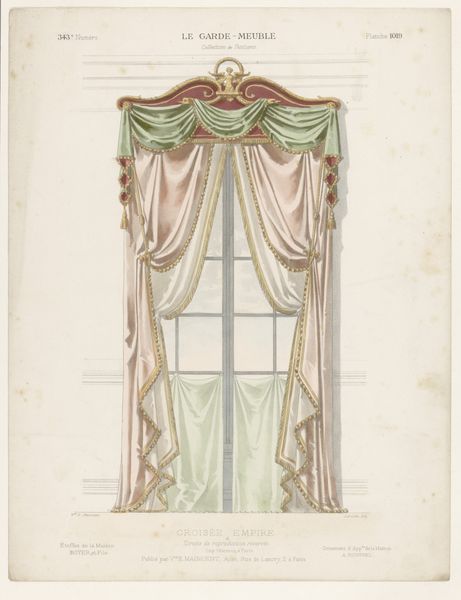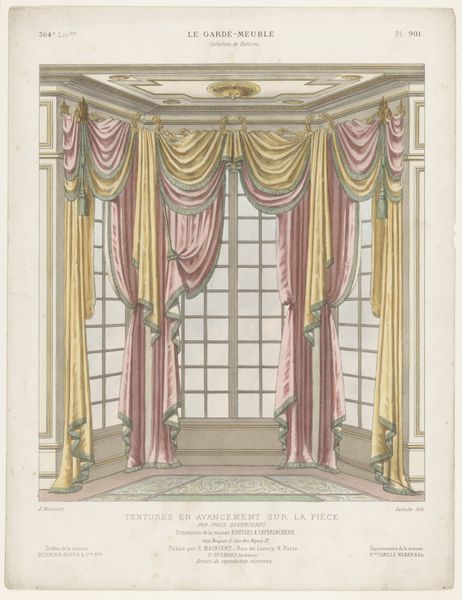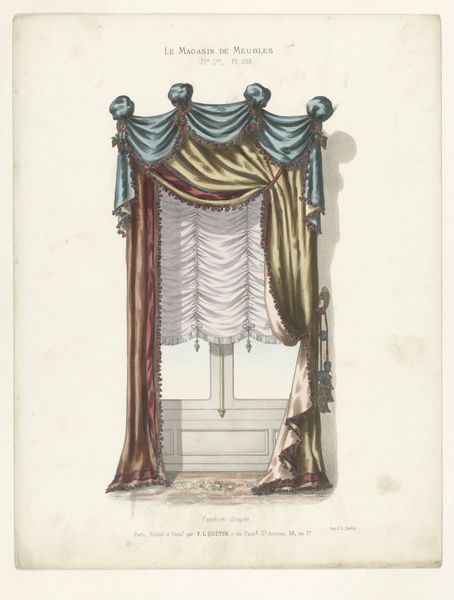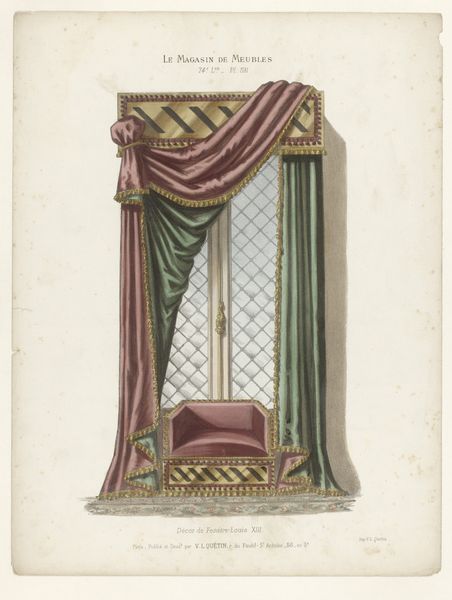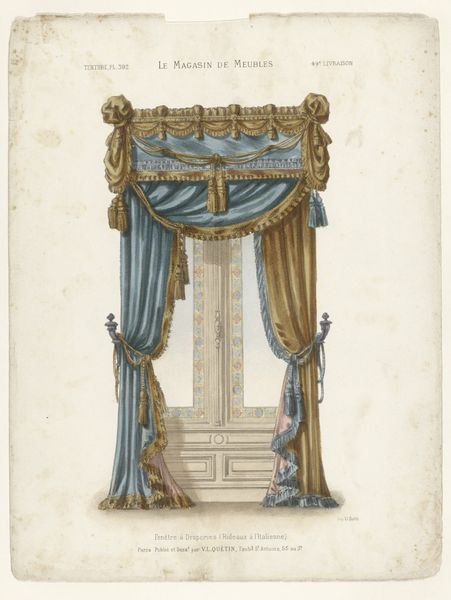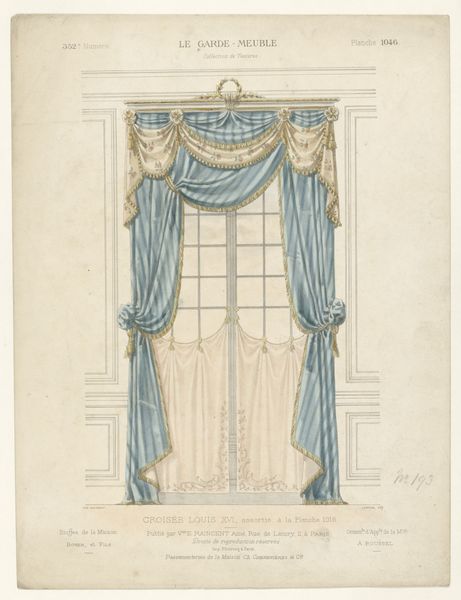
drawing, print
#
drawing
# print
#
academic-art
#
decorative-art
Dimensions: height 360 mm, width 273 mm
Copyright: Rijks Museum: Open Domain
Curator: Looking at this image, I'm immediately struck by its theatricality; the curtains framing what looks like a stage, not a window. It feels less about natural light and more about dramatic presentation. Editor: Exactly. This print, "Raampartij met gordijnen," dates to after 1878. The anonymous artist designed it, revealing late 19th-century sensibilities regarding interior decor and design—primarily visible via publications targeting consumers. The window's decorative trim gives insight into prevailing attitudes toward domesticity. Curator: Right. And thinking intersectionally, these curtains serve not just as window dressings, but also to enforce boundaries between the private, interior lives of the bourgeois, often women, and the external world they're simultaneously excluded from and defined by. Note how the diamond-pane windows could even metaphorically serve as a screen; creating privacy. Editor: I appreciate your perspective. Considering the print’s intended function sheds light, as you imply, on how socio-cultural norms affect perception. After all, the print comes from "Le Magasin de Meubles," likely aimed at aspirational homeowners to display particular fashions. Curator: It raises questions about visibility too, doesn't it? Whose vision is privileged? Who gets to look in or out? Are the curtains offering protection or creating isolation, or perhaps a bit of both, in a very gendered and classed way. I would love to know who specifically sought out such accoutrements. Editor: The composition—its scale and embellishments—reveal social dynamics by creating artificial constructs of display. That ornate valance atop the whole set screams display of affluence and status. Curator: So, while at first glance, these may look like mere drawings, in fact, they give visual cues, even now, to gender roles, class distinctions, consumer culture and who wielded power within those societal norms. Editor: Yes. Thinking historically, by delving into a "mere" decorative drawing of a window treatment, one is exposed to a whole new insight into what the era's values were, how consumerism started, and its connection to class distinction. A valuable lesson.
Comments
No comments
Be the first to comment and join the conversation on the ultimate creative platform.
